As we started the hot, demanding hike down the steep canyon walls, I wondered if it would be worth it. I’d been here only once before, and caught brown trout, but that was in the cool weather of September when the trout were quite active, not the smothering heat of a July afternoon. Other rivers around here shut down in the midsummer heat, and I was worried I might find a similar situation down in the valley. But the thought of having a beautiful stretch of water all to ourselves was enough to make up my mind.
Most people don’t think of the Driftless Area having a “backcountry”. It’s certainly not the vast tracts of unbroken wilderness you’d find out West, but there are definitely remote, unpressured waters deep in the Driftless wilderness that seldom see a fly or a fisherman. A few have trails, but most require an often difficult bushwack down steep bluffs and through fields of stinging nettles. The best trout streams (the ones that are full of fish but void of fisherman) seem to guard themselves with their natural surrounding. Driftless creeks are protected by sizzling nettles and limestone cliffs and arduous hikes. Which is fine by me. Keeps out the gunnysackers and the casual fisherman, leaving it only to the dedicated angler that respects the waters.
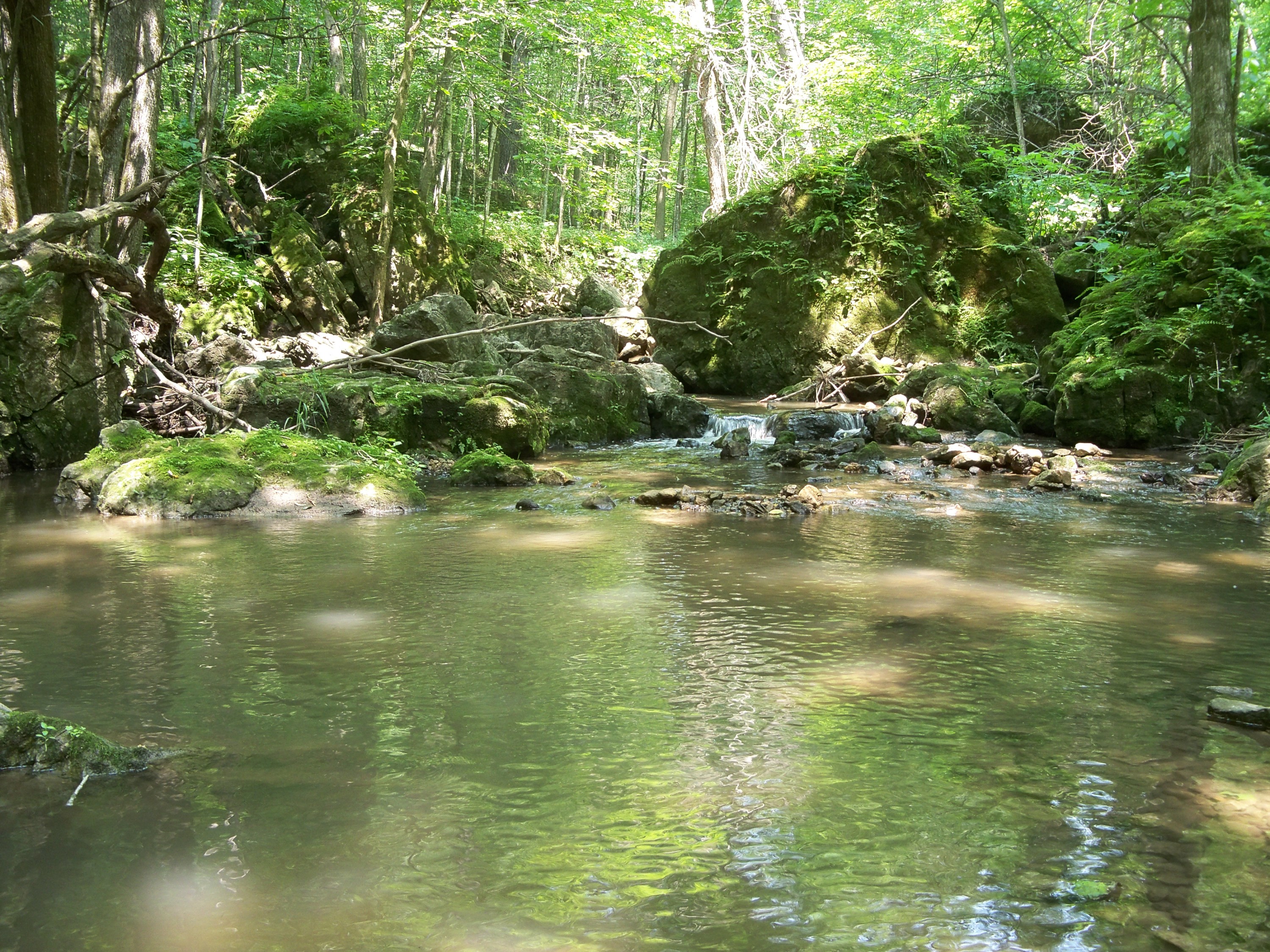
The goal of our mission today was to further explore a stretch of backcountry creek and hopefully find a bunch of eager wild brown trout. Busting through the thick brush, we started our descent into the canyon and soon found ourselves on a small feeder creek studded with beaver ponds. Some spots looked very trouty for a small stream, especially for a creek way back in the sticks, but a quick stream temp read 68 degrees, a bit warm for shaded water in the morning. Further downstream the creek looked more promising as a few small springs poured into the stream, but I was hungry for the main river, so I decided to keep the rod in the pack. We pressed on through the valley, and after an hour emerged around the ridge to find the main river. It was gorgeous, one of the prettiest pieces of water I’ve ever laid my eyes on. The stream, about twenty feet wide, flowed turquoise blue with just enough stain to create the perfect conditions for fishing. It rushed through riffles and over boulders, carving its way through the rugged valley, occasionally forming the deep, dark cliff pools found mostly in a trout fisherman’s dreams. A few trout were gently rising in the big cliff pool. The best part was we had it all to ourselves. There wasn’t even a sign of other fisherman in the pristine valley. It was a trout fisherman’s heaven!
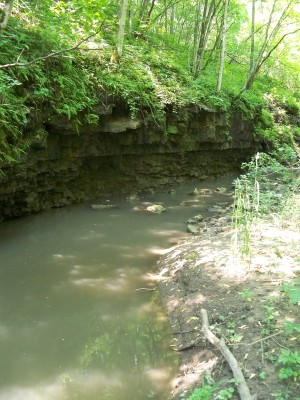
Braden and Noah chased the risers while I headed downstream. I rounded the bend to find a long, slow pool and a few trout dimpling the surface. I chopped off my nymph and grabbed a #20 black cdc comparadun from my pack. The fish were rising sporadically, but just steadily enough to float a dry over them. After repeatedly drifting the fly over the trout with what I thought was a good presentation, I didn’t get a response from the fish, so I tied on another nymph rig. The water was perfect for nymphing. The creek was just high and stained enough to give the trout some security and lose their typically stingy wariness, but clear enough to prevent the need for huge, flashy nymphs. The water was more reminiscent of a freestone stream than the average spring creek. Fast, riffled water plunged over boulders into little pools and runs for as far as you could see. The canyon had a wildness to it, not like the overwhelming awesomeness of the Rocky Mountain high country, but more of a gentle, intimate wilderness begging to be explored.
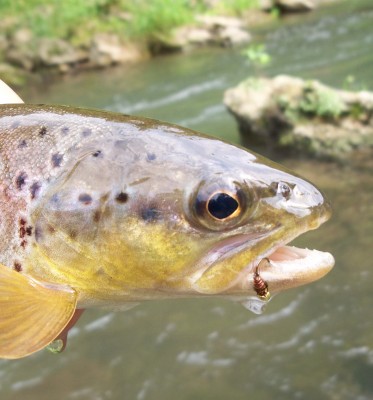 Honestly, the first hour of my fishing was pretty frustrating. I busted off a good half-dozen nymphs in the brush (must’ve been
Honestly, the first hour of my fishing was pretty frustrating. I busted off a good half-dozen nymphs in the brush (must’ve been my casting the wind), and lost more trout than I care to remember. Fly fishing can be quite humbling. But then things started to pick up. I settled on a #14 hare and copper with a #16 frenchie ptn eighteen inches below, all under an indicator. I found a nice little pool with a riffle and a few midstream boulders and pockets, and tossed my nymphs into the whitewater. A few mends, a short drift, and my indicator dipped slightly. I set the hook and brought my first trout of the season to hand, a pretty little wild brown.
The fishing was quite good for the next couple of hours. I kept working my way downstream through the seemingly endless series of awesome riffles and pools and runs, hooking a trout in almost every fishy spot. I found the most productive technique by accident. The nymphs were starting to drag at the tail of the pool, and as I was preparing to recast a trout came flying out of nowhere and slammed my fly, but I missed him. Wondering if it was just a fluke, I dropped my nymphs near the head of the pool and just as they reached the middle, I allowed them to drag and swing in the current. Sure enough, another brown charged out from the depths and took my fly.
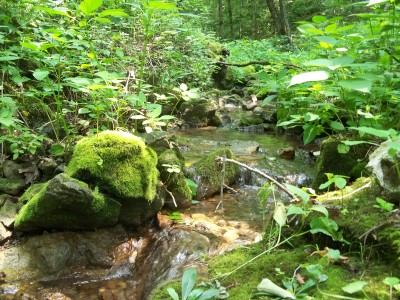
I picked up plenty of browns (sixteen total), including a nice fifteen incher that took me a few pools downstream on my 6x tippet, but most averaged eight inches. A good chunk of the trout were taken with a twitch or slight swing of the flies over the deep holes and runs. I hiked back upstream to find the rest of the guys. Braden and Noah had camped out on the cliff pool and took a handful of wild browns mostly on dry flies. The little browns slashed aggressively at their #12 black ant, with only one coming on a pink squirrel nymph.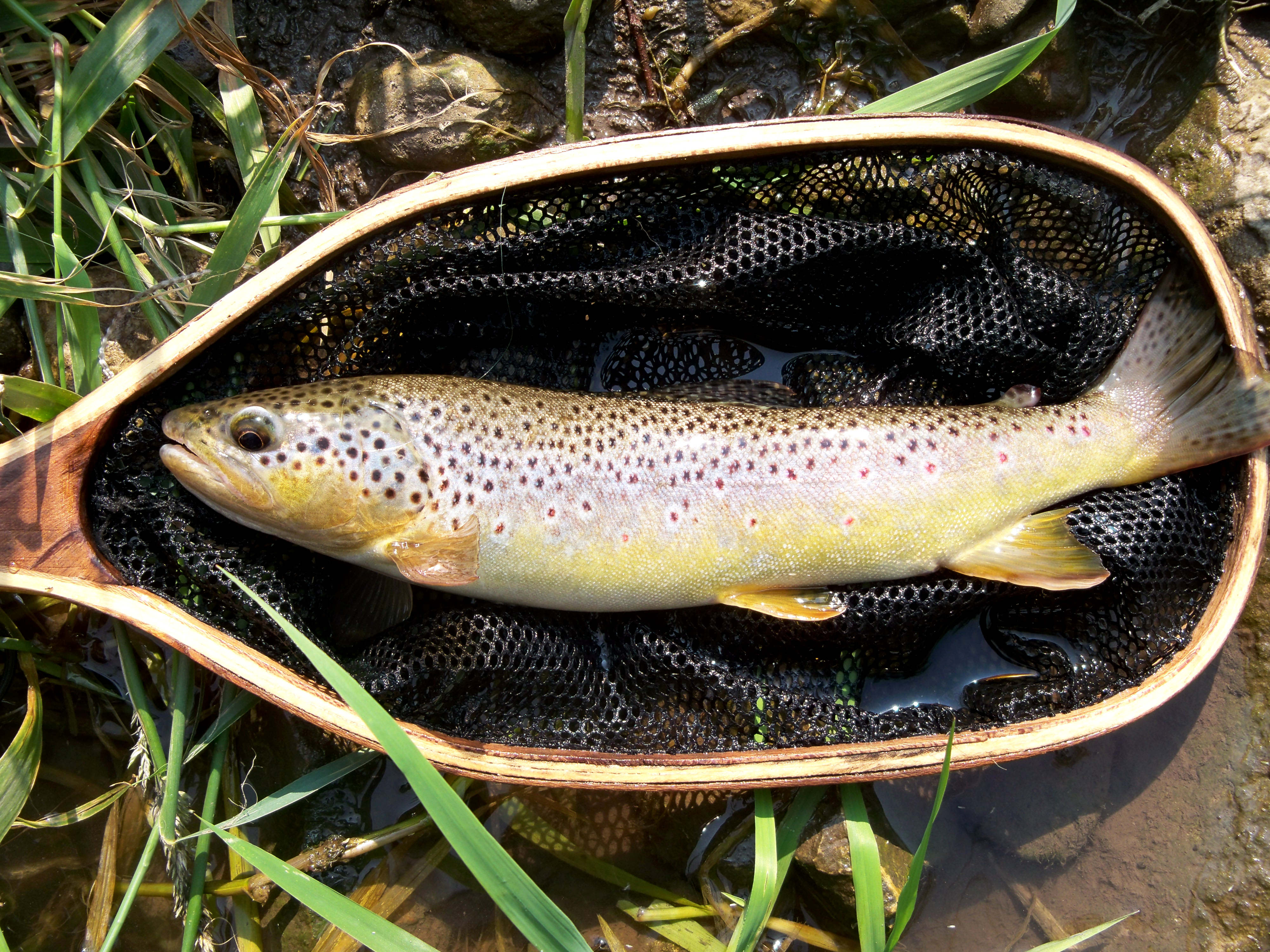
“Blue lining” and exploring new water is one of my absolute favorite parts of fly fishing. There’s just something about the adventure of finding a creek on a map, dreaming about it all winter, and then finally hiking in to find it full of trout that gets my adrenaline going. The Driftless Area is an awesome place that has a bunch of different experiences for the fly fisher, but the “backcountry” can be truly amazing if you’re willing to do some serious bushwacking (usually into a state forest or wildlife management area). So grab a map and your hiking boots, find a blue line, and you might just find your fly fishing heaven!
Next we’re headed up to the lake for some summer bassin, which should be pretty good with the late spring we had.
Tight Lines,
Conner

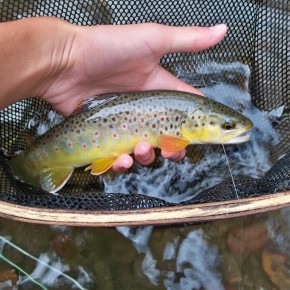
Thanks for the read, guys. I’m very new to fly fishing (do you know how hard it is to find women’s boots?!) and I’m headed to Whitewater State Park for the long weekend. Can you suggest any tips like on flies? Remember, I’m new so I don’t know all the lingo yet. :) Wish me luck!
Thanks Willy, glad you enjoyed the post! The Whitewater is a great stream and definitely one of my favorite spots to fish. This time of year you are going to find Trico mayflies (very small black mayflies) very early in the morning when the air temp reaches 68 degrees (probably at or before sunrise with this heat!), and you will probably see trout gently rising in the slow water if the hatch is on. These Tricos can be very difficult to fish, but if you are up for the challenge here are a few tips. The Trico duns (adults) will form mating swarms above the creek, and then fall dead on the water. The dead adults (spinners) are what the trout are keying in on, so a #20 to #24 trico spinner is a good match (check out the post we did on trico flies here for more patterns). Since these mayflies are so tiny and hard to see, I usually tie on a big, bushy, dry fly that is easy to see, then tie on about 24 inches of 6X tippet to the bend of the big dry (use a clinch knot), and add your trico to the end of that. Cast it to the risers and set the hook when a trout rises near your big dry fly.
Later in the day I would fish a terrestrial dry fly pattern (try a #16 black ant or a #12 grasshopper, or whatever size you find the real bugs are). Terrestrials are a big part of a trout’s diet during the summer and can provide some awesome action (especially in grassy sections). Nymphs under an indicator are probably going to be your best bet for catching fish throughout the day. My favorites for the park are a #14 hare’s ear nymph, a #14 gold copper john, and a #16 pheasant tail (all with a gold bead). I would also try a tiny #20 black nymph to try and imitate the trico nymphs. A #20 black midge larva is also a great fly. With the heat we have been getting, look for shaded spots and faster water to find the trout. In the evening, if the fish are rising try a #16 elk hair caddis or a #16 quill gordon dry fly.
Another thing I would suggest would be to consider fishing outside the park. There are some awesome spots on the upper Middle Branch! Also, check out the Driftless Angler fly shop in Viroqua, WI for women’s fly fishing stuff, I’ve heard they do a good job with that.
Good luck fishing and tight lines!!
Conner